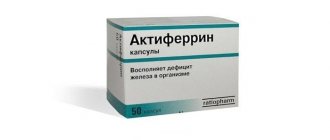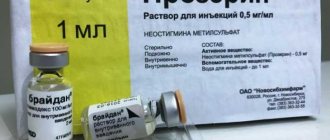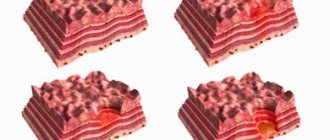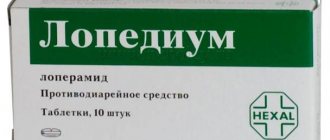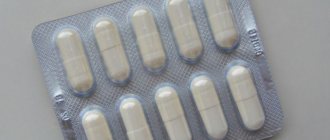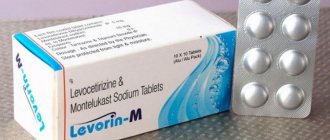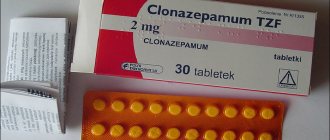Amebiasis is a parasitic disease caused by the parasite Entamoeba histolytica. People of any age are susceptible to the disease. Its peculiarity is that for many years one may not suspect that there are harmful microorganisms in the body. The danger is infection of people in contact with the carrier. If the parasite becomes abundant, the intestinal mucosa begins to be damaged, symptoms begin to manifest themselves, and amoebic dysentery may occur. The drug Intetrix is specially designed for the treatment and prevention of amebiasis.
The universal composition helps get rid of parasites. The amebicidal agent acts on Entamoeba histolytica, both in cysts and in luminal form. If at least one family member is infected, treatment with Intetrix is recommended for everyone.
The product is produced by the French pharmaceutical company Bofur Ipsen Industry.
How the drug works
After administration, maximum concentration occurs within 3.5-4 hours.
The drug exhibits its effect throughout the day, half-life occurs after 12 hours. The active ingredients are practically not absorbed in the gastrointestinal tract; metabolism occurs through the blood (after the active substances are absorbed by the intestines).
Excretion - with feces.
Read: Instructions for use of Gelmadol.
Use of Intetrix in the treatment of intestinal dysbiosis in young children
Home Articles Professional publications of doctors Gastroenterology
Over the past 8-10 years, the problem of studying dysbacteriosis in young children has intensified significantly. Many factors have been described that contribute to the formation of the inflammatory process in various parts of the digestive system.
A common link in the complex pathogenesis of intestinal diseases is an imbalance of intestinal microflora, which in some patients may be a consequence of the disease, in others - a triggering etiopathogenetic mechanism. In recent years, a large role in the development of chronic intestinal diseases has been given to conditionally pathogenic microorganisms such as Protea, Klebsiella, Citrobacter, hemolyzing Escherichia coli, fungi of the genus Candida and hemolyzing Staphylococcus.
Considering the low therapeutic effect of drugs used to treat dysbiosis in young children, we have been using the drug Intetrix for 5 years. This drug is prescribed to children in an age-appropriate dose in the subcompensated and decompensated phase of intestinal dysbiosis.
Intetrix is an intestinal antiseptic, synthesized in accordance with Good Manufacturing practice standards in the BOFUR research laboratory in DREU, France. Compound:
- Tiliquinol 50 mg.
- Tiliquinol N-Dodecyl sulfate 50 mg.
- Tilbroquinol 200 mg.
These components of the drug have synergism with each other, the bactericidal spectrum of action of which complements each other, potentiating the effect of each of them.
The presence of methyl groups and the absence of chlorine and iodine halogens in the molecular structure of the drug, unlike other hydroxyquinolines such as enteroseptol, intestopan, ensures Intetrix safety of use. Antimicrobial activity: Wide antimicrobial spectrum of action (gram-positive and gram-negative bacteria), antifungal effect, antiamoebic effect.
Unlike many antiseptics, Intetrix maintains the balance of saprophytic flora. Numerous clinical studies by the company have shown that Intetrix in therapeutic doses does not change the normal composition of the intestinal microflora. In addition, by acting on pathogenic bacteria, intetrix protects the physiological activity of saprophytic flora. This phenomenon is explained by the specificity of the antigenic structure of pathogenic microorganisms, which are very sensitive to it. Representatives of the saprophytic flora have a different antigenic structure, which provides them with greater resistance.
The purpose of this work was to study the clinical and laboratory indicators of intestinal dysbiosis before and after the use of the drug Intetrix. For the study, we took four groups of children aged 0 to 2 years:
- the group received hilak forte
- furazolidone
- Linux
- intetrix
The studies were carried out in the acute period of the disease. The drugs were dosed according to the age and recommendations of the manufacturers. Intetrix was prescribed at a dose of 10 mg. For 1 kg. mass per day, for 5-8 days, depending on the severity of the clinical manifestations of the disease.
- 0-3 months 1/6 cap. x 1 time per day
- 4-5 months 1/5 drop x 1 time per day
- 6-9 months 1/4 drop x 1 time per day
- 10-12 months 1/4 drop x 2 times a day
- 1 - 1.5 years 1/5 drop. x 3 times a day
- 2 years 1/4 cap. x 3 times a day
In total, over the years we have treated 826 people aged 0-2 years. All children who received the drug were observed by us for 6-15 months. Particular attention was paid to the dynamics of regression of clinical symptoms and changes in the coprogram and the composition of the intestinal microflora. The research results are presented in tables No. 1 and No. 2. By clinical effect we mean normalization of appetite, disappearance of dyspeptic symptoms, weight gain, normalization of temperature.
In stool tests for dysbacteriosis, microbes predominated: St/ Aureus - 67.4%, hemolyzing Escherichia - 24.1%, fungi of the genus Candida - 4.3%, Proteus - 4.1%, others - 0.1%.
Clinical effect of therapy as a percentage by day.
Table No. 1
| Drugs | Observation days | |||||||||||
| 2 | 3 | 4 | 5 | 6 | 7 | 8 | 9 | 10 | 11 | 12 | 20 | |
| Hilak-forte | 74,3 | |||||||||||
| Furazolidone | 68,4 | 74,6 | ||||||||||
| Linex | 47,3 | 63,2 | ||||||||||
| Intetrix | 76,3 | 91,7 | ||||||||||
Dynamics of restoration of intestinal flora in percentage by day.
Table No. 2
| Drugs | Observation days | |||||||||
| 10 | 20 | 30 | 40 | 50 | 60 | 70 | 80 | 90 | ||
| Hilak-forte | 53,7 | 64,3 | ||||||||
| Furazolidone | 69,1 | 43,8 | ||||||||
| Linex | 43,7 | 57,2 | Intetrix | 88,3 | 96,1 | |||||
The results obtained indicate the good effectiveness of Intetrix in the treatment of dysbiosis in children aged 0-2 years.
In children, from the first day of treatment, we noted a pronounced effect and good tolerability of the drug. In 3 children (0.4%) with intestinal dysbiosis complicated by atopic dermatitis, we noted a deterioration in the skin, which forced us to add short-course desensitizing drugs to the complex treatment. Biochemical blood monitoring (FPP-selective), after drug therapy, did not reveal any changes; no enlargement of the liver was noted in children. The study noted the fact that the drug is highly effective in the treatment of dysbiosis caused by Proteus and fungal flora, when other antiseptics were ineffective.
Thus, our observations make it possible to recommend the use of the drug Intetrix for children aged 0-2 years with intestinal dysbiosis in the stage of subcompensation and decompensation.
Authors: Zemlyakov V.L., Ph.D., Honored Doctor of the Russian Federation Saevets N.V.
Source : Medical Pediatric Center Dulkina L.A. print version
How can you tell if your body is infected with Entamoeba histolytica parasites?
Symptoms of the disease are:
- elevated temperature (over 39 degrees), accompanied by chills;
- pain in the abdomen, discomfort;
- diarrhea with mucus or bloody streaks;
- in advanced cases – liver damage (feeling of usefulness in the area of the organ).
If the two described symptoms are present, one can suspect that the patient has amoebiasis. Bacteriological analysis of stool and endoscopic examination of the intestine helps confirm the diagnosis.
Side effects
Intetrix is usually well tolerated. Rarely, patients complained of side effects such as:
- allergic reactions (itching, skin rashes, Quincke's edema);
- increased levels of liver transaminase;
- minor disturbances or changes in the optic nerves.
In isolated cases, taking the drug provoked the development of hepatitis.
This is interesting: Beneficial properties of Jerusalem artichoke syrup.
Instructions:
Clinical and pharmacological group
06.040 (Drug with antibacterial, antiprotozoal and antifungal action, 8-hydroxyquinoline derivative. Antidiarrheal drug)
Release form, composition and packaging
◊ Capsules size No. 1, with an opaque dark red cap and an opaque white body; the contents of the capsules are microcrystalline powder of grayish-yellow color.
| 1 caps. | |
| tiliquinol | 50 mg* |
| tiliquinol lauryl sulfate | 50 mg* |
| tilbroquinol | 200 mg |
* — total content of tiliquinol in 1 capsule. ranges from 65.2 mg to 72.2 mg (theoretical 68.7 mg ± 5%).
10 pieces. - blisters (1) - cardboard packs. 10 pcs. - blisters (2) - cardboard packs. 20 pcs. - blisters (1) - cardboard packs.
pharmachologic effect
The pharmacological effect in chronic amebiasis is achieved due to the synergism of the amoebicidal action of the three antimicrobial components that make up Intetrix.
The drug acts in the intestinal lumen and is used to treat intestinal amebiasis.
Intetrix® is effective against vegetative forms of amoebiasis. Intetrix® does not disturb the balance of normal intestinal microflora.
Pharmacokinetics
Cmax in plasma after taking the capsules is observed after 3-4 hours. When administered orally, the degree of absorption in the gastrointestinal tract is low, which allows maintaining an effective concentration in the intestinal lumen.
The drug is metabolized in several ways:
- entry into the blood after absorption from the intestine,
- transformation in the intestine, after partial absorption and excretion,
- entry into the intestine without absorption and excretion along with intestinal contents.
T1/2 is about 10 hours. Maximum excretion is determined after 12-24 hours. The entire drug is excreted after 48 hours.
Dosage
Prescribe 2 caps. in the morning and 2 caps. in the evening for 10 days.
Capsules are taken orally, whole, preferably at the beginning of a meal, with a sufficient amount of water.
Overdose
In case of overdose, it is necessary to monitor the activity of serum transaminases, as well as the level of prothrombin.
Drug interactions
The drug should not be prescribed simultaneously with medications containing hydroxyquinolines.
Use during pregnancy and lactation
In animal studies, no terratogenic effect was detected. Currently, there is not enough data to assess the potential risk of birth defects or the fetotoxic effect of the drug when administered during pregnancy. Studies of the effect of the drug on lactation in animals have not been conducted.
Therefore, the use of Intetrix during pregnancy and breastfeeding is undesirable. In the presence of recurrent miscarriages, the use of the drug is not recommended, since this condition requires careful monitoring and well-planned prenatal monitoring.
Side effects
Rarely, skin reactions such as urticaria, angioedema and persistent pigmented erythema may occur.
Extremely rarely, in cases of long-term use of the drug, peripheral neuropathy and transient disorders of the optic nerve can be observed.
Rarely, when taking the drug, an increase in transaminase levels is possible.
Storage conditions and periods
Store at a temperature not exceeding 25°C out of the reach of children. Shelf life: 3 years.
Indications
Intestinal amoebiasis in adults:
— as part of complex therapy with tissue amoebicides;
- monotherapy for asymptomatic cases of diagnosed amoebiasis.
Contraindications
- individual hypersensitivity to the components of the drug.
With caution: liver failure.
special instructions
If the level of transaminases increases, especially in liver failure, it is necessary to stop treatment with the drug.
Long-term use of Intetrix is not advisable due to the risk of peripheral neuropathy.
Use for liver dysfunction
With caution: liver failure.
Conditions for dispensing from pharmacies
The drug is approved for use as a means of OTC.
special instructions
If during treatment with the drug jaundice begins to develop, the liver enlarges, and transaminases increase, treatment should be discontinued. Further treatment with the drug may cause peripheral neuropathy.
It is not recommended to take it for more than 10 days - a possible complication in the form of optic neuropathy.
Simultaneous treatment with medications containing hydroxyquinolines is prohibited.
It is allowed to be used by women of reproductive age only if they use reliable contraceptives.
The drug is prescribed with caution for allergies, since the active substance azorubine is a dye and can provoke an allergic reaction.
Due to the lactose content, it is not recommended for patients with milk protein intolerance.
Instructions for use
If suspicious symptoms appear, you should consult a doctor as soon as possible to make a diagnosis and choose the preferred treatment regimen. Typically, therapy includes taking drugs with antibacterial, antifungal and antiprotozoal effects. One of these drugs is Intetrix.
pharmachologic effect
Intetrix is a broad-spectrum intestinal antiseptic. Doctors believe that the drug is most effective against vegetative types of amebiasis, since the drug has powerful antimicrobial, bactericidal and bacteriostatic abilities.
Intetrix stops the negative effects of the yeast-like fungus C. albicans and microorganisms such as S. Faecalis, Pseudomonas aeruginosa, Proteus vulgaris, Serratia marcescens, Vibrio cholerae Inaba, Vibrio cholerae Ogava, etc. The structure of Intetrix does not contain chlorine or iodine ions, which cannot be said about other hydroxy-8-quinoline derivatives. The drug does not upset the balance of normal intestinal microflora.
In chronic amebiasis, the pharmacological effect is achieved due to the synergism of the amoebicidal action of the three antiseptic components included in the drug. Intetrix acts in the intestinal lumen and is prescribed to people suffering from intestinal amebiasis.
3-4 hours after taking the capsules, the maximum concentration of the drug in plasma is observed. The half-life is approximately 10 hours. After 12-24 hours, the maximum excretion is determined. Intetrix is completely eliminated after two days.
When administered orally, the degree of absorption of the drug in the gastrointestinal tract is not high. This allows you to maintain effective con
Intetrix is metabolized in three ways:
- entry into the blood following absorption from the intestine;
- partial absorption, transformation in the intestine, excretion;
- entry without absorption into the intestine, excretion with intestinal contents.
Indications for use
Intetrix is used to treat intestinal amoebiasis in adult patients:
- monotherapy for asymptomatic cases of diagnosed amoebiasis;
- complex therapy, including the use of tissue amoebicides.
Sometimes the drug is prescribed for the preventive treatment of intestinal infections, for example, dysbiosis or diarrhea.
Mode of application
Intetrix is suitable for oral use. The treatment regimen depends on the diagnosis:
| Diagnosis | Treatment regimen |
| Acute severe intestinal infections | 6-8 capsules of the drug per day; frequency of administration – from 3 to 4 times a day. |
| Moderate course of the disease | 4-6 capsules per day for three to five days. |
| Chronic amoebiasis | 4 capsules per day for 10 days; a second course of treatment is carried out after a month. |
| Prevention of mycoses when using broad-spectrum antibiotics, as well as diarrhea caused by fungi | 3 capsules of Intetrix per day. |
| Prevention of intestinal infections (necessary for visitors to endemic regions) | 2 capsules of the drug per day for the duration of your stay in such regions. |
The medicine is taken before meals with a small amount of water. To make it easier to take the drug (for example, when treating children), the capsule can be opened and its contents added to 1 tsp. food.
Release form, composition
Intetrix is available in the form of opaque capsules of size No. 1 with a white body and a dark red cap. The capsule contains a grayish-yellow microcrystalline powder. The drug is sold in blisters placed in cardboard packaging.
The drug contains three active components: tiliquinol, tilbroquinol and tiliquinol N-dodecyl sulfate. Excipients (inactive) ingredients include corn starch and lactose monohydrate.
The body and cap of the capsule contain components such as indigotine, titanium dioxide, azorubine and gelatin. The weight of the capsule contents is 420 mg.
Interaction with other drugs
Intetrix is not recommended to be taken in combination with medications that contain hydroxyquinolines.
Prevention of amebiasis
Compliance with personal hygiene rules (hands must be washed thoroughly, especially after visiting a public toilet).
Do not eat unwashed fruits, berries, and vegetables.
Drink boiled water, regardless of whether your area of residence is considered safe or not.
Do not buy products from unauthorized retail outlets.
Do not fertilize plants with human waste.
Cover food if there are flies in the room.
Analogues of Intetrix
There are no full-fledged analogues with similar compositions. However, if necessary, the drug can be replaced with agents that have a similar pharmaceutical effect:
- Fazizhin;
- Dazolic;
- Tiniba;
- Mekol;
- Doxal;
- Ornisid Forte;
- Klion;
- Co-trimoxazole;
- Orvagil;
- Procelan;
- Metronidazole;
- Ginalgin;
- McMiror;
- Ornisid;
- Gairo;
- Biseptol;
- Doxycycline;
- Tiberal;
- Delagil;
- Flagyl;
- Tinidazole.
Reviews
Anastasia Semyonovna It so happened that for a long time I did not suspect that I had amoebiasis. I don’t know where and when I became infected. Perhaps you came into contact with someone infected or drank poor-quality water. The diagnosis was made after my liver and stomach began to hurt badly, the temperature became +40 degrees, and nothing helped bring it down, plus diarrhea with mucus appeared. Treatment with Intetrix was prescribed. It works almost immediately. The diarrhea stopped on the second day, and the temperature subsided. The course of treatment was 10 days. All the symptoms went away, and repeated tests showed that I no longer had parasites in my body. All family members were tested. It turned out that I also infected them, it’s just that the disease had not yet had time to manifest itself. My husband and sons had to undergo treatment. The cost of the drug is affordable, I tested the effectiveness on myself. No one had any side effects.
Kristina I came across the drug Intetrix quite by accident. I suddenly got “stirred” at the dacha. Severe diarrhea and nausea began. Or she ate something wrong, or drank dirty water. It’s a long way from the city, I understood that I couldn’t get there in this condition, and I had to act on the spot. Well, at least my neighbor in the dacha was there. She is a doctor and recommended this remedy to me, which she had with her. As she said, Intetrix helps with intestinal infections and disorders, including poisoning. I immediately drank two capsules, and by evening the diarrhea stopped. Works instantly. And although it is recommended to drink it for 10 days, I drank it for 5. Now the product is always with me, especially if I travel or at the dacha. You never know, but it actually helps. And most importantly, almost instantly.
Intetrix®
Manufacturer: BEAUFOUR IPSEN INTERNATIONAL (France)
◊ capsule: 10 or 20 pcs. Reg. No.: P No. 011534/01
Clinical and pharmacological group:
A drug with antibacterial, antiprotozoal and antifungal effects, a derivative of 8-hydroxyquinoline. Antidiarrheal drug
Release form, composition and packaging
◊ Capsules
size No. 1, with an opaque dark red cap and an opaque white body; the contents of the capsules are microcrystalline powder of grayish-yellow color.
| 1 caps. | |
| tiliquinol | 50 mg |
| tiliquinol lauryl sulfate | 50 mg |
| tilbroquinol | 200 mg |
total content of tiliquinol in 1 caps. ranges from 65.2 mg to 72.2 mg (theoretical 68.7 mg ± 5%). N-dodecyl sulfate = lauryl sulfate.
10 pieces. - blisters (1) - cardboard packs. 10 pieces. - blisters (2) - cardboard packs. 20 pcs. - blisters (1) - cardboard packs. 20 pcs. - blisters (2) - cardboard packs.
Description of the active components of the drug "Intetrix®"
pharmachologic effect
The pharmacological effect in chronic amebiasis is achieved due to the synergism of the amoebicidal action of the three antimicrobial components that make up Intetrix.
The drug acts in the intestinal lumen and is used to treat intestinal amebiasis.
Intetrix® is effective against vegetative forms of amoebiasis. Intetrix® does not disturb the balance of normal intestinal microflora.
Indications
Intestinal amoebiasis in adults:
— as part of complex therapy with tissue amoebicides;
- monotherapy for asymptomatic cases of diagnosed amoebiasis.
Dosage regimen
Prescribe 2 caps. in the morning and 2 caps. in the evening for 10 days.
Capsules are taken orally, whole, preferably at the beginning of a meal, with a sufficient amount of water.
Side effect
Rarely
Skin reactions
such as urticaria, angioedema and persistent pigmented erythema may occur
Extremely rare, in cases of long-term use
peripheral neuropathy and transient optic nerve disorders may occur.
Rarely
When taking the drug, an increase in transaminase levels is possible.
Contraindications
- individual hypersensitivity to the components of the drug.
Carefully :
liver failure.
Pregnancy and lactation
In animal studies, no terratogenic effect was detected. Currently, there is not enough data to assess the potential risk of birth defects or the fetotoxic effect of the drug when administered during pregnancy. Studies of the effect of the drug on lactation in animals have not been conducted.
Therefore, the use of Intetrix during pregnancy and breastfeeding is undesirable. In the presence of recurrent miscarriages, the use of the drug is not recommended, since this condition requires careful monitoring and well-planned prenatal monitoring.
Use for liver dysfunction
With caution: liver failure.
special instructions
If the level of transaminases increases, especially in liver failure, it is necessary to stop treatment with the drug.
Long-term use of Intetrix is not advisable due to the risk of peripheral neuropathy.
Overdose
In case of overdose, it is necessary to monitor the activity of serum transaminases, as well as the level of prothrombin.
Drug interactions
The drug should not be prescribed simultaneously with medications containing hydroxyquinolines.
Conditions for dispensing from pharmacies
The drug is approved for use as a means of OTC.
Storage conditions and periods
Store at a temperature not exceeding 25°C out of the reach of children. Shelf life: 3 years.
Drug interactions
The drug should not be prescribed simultaneously with medications containing hydroxyquinolines.
